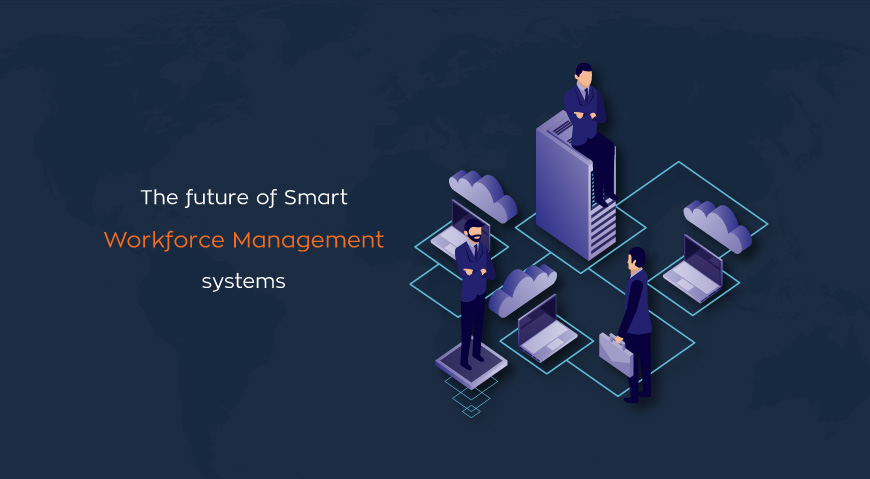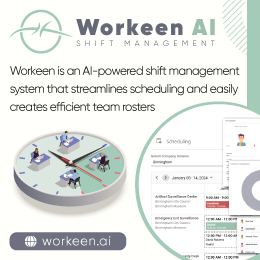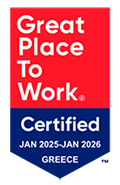- Posted by: blignos
- Published: 22-06-2023
- Category: Latest news
The future of Smart Workforce Management systems
One perspective here is that the evolution and future of Cloud based, real time, workforce management systems may be influenced by a multitude of factors and there is a lot of complexity in how they will evolve, but with some working assumptions the conclusion that the ever-growing need will be one of the key factors seems to make a lot of sense.
 The future of WMS is likely to involve the integration of emerging technologies, such as artificial intelligence (AI), machine learning (ML), and advanced analytics. These technologies can help automate repetitive tasks, provide real-time insights into workforce performance, and enable more efficient and effective decision-making.
The future of WMS is likely to involve the integration of emerging technologies, such as artificial intelligence (AI), machine learning (ML), and advanced analytics. These technologies can help automate repetitive tasks, provide real-time insights into workforce performance, and enable more efficient and effective decision-making. One trend that is likely to continue in the future is the shift towards such systems – solutions (SaaS). This will allow businesses to easily access and manage their workforce data from anywhere, as well as take advantage of the scalability and flexibility offered by cloud computing.
One trend that is likely to continue in the future is the shift towards such systems – solutions (SaaS). This will allow businesses to easily access and manage their workforce data from anywhere, as well as take advantage of the scalability and flexibility offered by cloud computing. Another area of focus is likely to be employee engagement and retention. Workforce management systems can be used to measure and improve employee engagement, as well as identify and address potential retention issues before they become major problems.
Another area of focus is likely to be employee engagement and retention. Workforce management systems can be used to measure and improve employee engagement, as well as identify and address potential retention issues before they become major problems. In addition, the use of data analytics and predictive modeling will become increasingly important in workforce management. These tools can help businesses identify patterns and trends in workforce data, and use that information to make data-driven decisions that optimize performance and productivity.
In addition, the use of data analytics and predictive modeling will become increasingly important in workforce management. These tools can help businesses identify patterns and trends in workforce data, and use that information to make data-driven decisions that optimize performance and productivity. Last but not least, since the environment is asking for everyone's help, today more than ever, businesses are called upon to implement eco-friendly solutions, or rather the most eco-friendly solutions possible than ever before. Cloud-based workforce management systems eliminate the need for on-premise servers, which can consume a significant amount of energy, significantly reduce paper usage, by eliminating the need for paper-based records and reduce the overall number of servers required, resulting in a smaller carbon footprint.
Last but not least, since the environment is asking for everyone's help, today more than ever, businesses are called upon to implement eco-friendly solutions, or rather the most eco-friendly solutions possible than ever before. Cloud-based workforce management systems eliminate the need for on-premise servers, which can consume a significant amount of energy, significantly reduce paper usage, by eliminating the need for paper-based records and reduce the overall number of servers required, resulting in a smaller carbon footprint.
Why to move to a cloud-based, workforce management system
There are several reasons why businesses should consider moving to a cloud-based workforce management system:
- 1 Cost Savings: Cloud-based workforce management systems can significantly reduce costs associated with on-premise hardware and software, including server maintenance, upgrades, and software licensing fees.
- 2 Accessibility: Cloud-based workforce management systems allow managers and employees to access workforce data from anywhere with an internet connection, enabling remote work and collaboration.
- 3 Scalability: Cloud-based systems can easily scale up or down to meet the changing needs of the business, without the need for significant investments in hardware or software.
- 4 Security: Cloud-based workforce management systems often provide enhanced security features, such as automatic backups, multi-factor authentication, and data encryption, to protect sensitive workforce data.
- 5 Efficiency: Cloud-based workforce management systems can automate repetitive tasks, such as scheduling and time tracking, and provide real-time insights into workforce performance, enabling more efficient and effective decision-making.
- 6 Sustainability: By reducing the need for on-premise hardware and enabling remote work, cloud-based workforce management systems can contribute to a more sustainable business operation.
Overall, the future of workforce management systems is likely to be characterized by the integration of technology, a focus on employee engagement and retention, and the use of data analytics and predictive modeling to drive decision-making.
WMS Applications
Workforce management systems can be applied in multiple fields, including:
- 1 Hospitality: They can be used to manage and schedule staff in hotels, restaurants, and other hospitality businesses. This can include managing shifts and schedules, and automating predefined inspections.
- 2 Security: They can be used to manage and schedule the activities of security personnel, as well as to automate and optimize scheduling and resource allocation.
- 3 Aviation: A general use would be to manage and schedule staff in airports and airlines. This can include tracking attendance, managing shifts and schedules, and automating time and attendance tracking.
- 4 Mega Events: They can be the solutions to manage and schedule staff for large-scale events, such as festivals, concerts, and sporting events. This can include tracking attendance, managing shifts and schedules, and automating time and attendance tracking.
Overall, workforce management systems can be used in various industries and fields to streamline workforce management processes, automate scheduling and resource allocation, and optimize overall workforce performance.
The only certain conclusion is that such systems are coming to play a leading role in many different industries, as technology is stepping into paths that are very beneficial for both the business and the worker with highly human-centric approaches.
For a creative discussion feel free to contact us at success@qrpatrol.com
Written by Michael Parmazis























